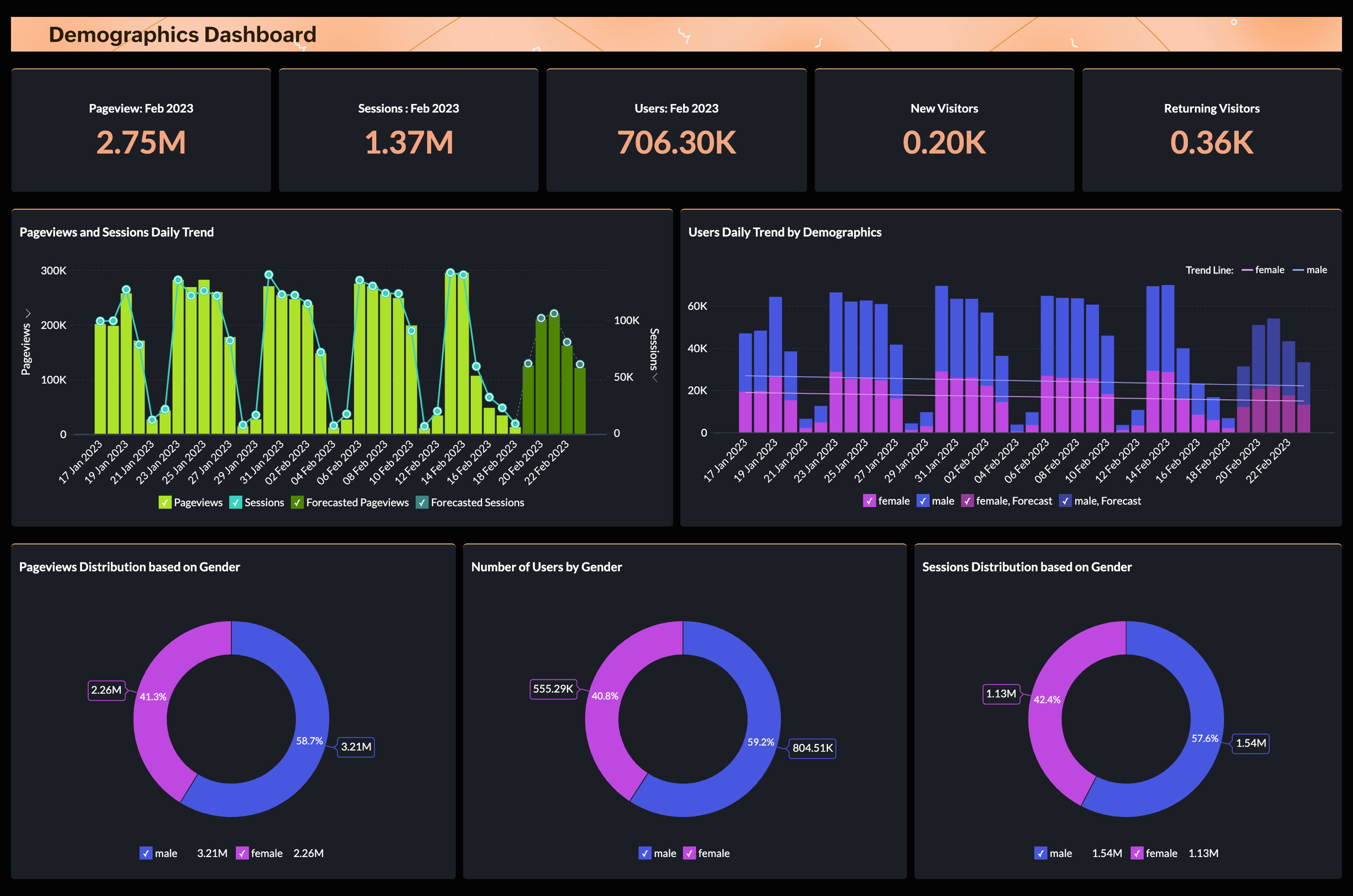A Closer Look: What Does Google Analytics Specifically Prohibit from Being Collected?
A Closer Look: What Does Google Analytics Specifically Prohibit from Being Collected?
Blog Article
Leveraging Google Analytics for In-Depth Insights Into Individual Actions and Interaction
In the electronic landscape where individual actions and engagement hold the essential to on the internet success, leveraging devices like Google Analytics has actually ended up being extremely important for organizations seeking to understand their target market's interactions with their systems. This sophisticated analytics platform supplies a riches of information that can unveil intricate information about just how individuals browse internet sites, involve with material, and ultimately convert - what data does google analytics prohibit collecting. By taking advantage of Google Analytics, companies can discover beneficial understandings that go past surface-level metrics, providing a comprehensive understanding of customer actions and preferences
Understanding Customer Actions Via Google Analytics
Utilizing Google Analytics provides an extensive understanding of individual habits on digital platforms. By examining data such as the variety of site visitors, their geographical places, the pages they see, and the actions they take, businesses can get beneficial understandings into how customers engage with their applications or web sites. This information allows for notified decision-making, enabling organizations to enhance their on-line visibility for improved individual experience and engagement.
One trick element that Google Analytics helps to uncover is user web traffic patterns. By tracking metrics like the source of website traffic, recommendation links, and prominent key phrases, services can recognize what drives individuals to their system. what data does google analytics prohibit collecting. This understanding aids in tailoring advertising strategies to target details demographics or interests efficiently
Moreover, Google Analytics uses detailed records on individual involvement, showcasing metrics like bounce rates, session durations, and conversion prices. Recognizing these metrics offers important feedback on the effectiveness of web content, layout, and overall customer experience, encouraging organizations to make data-driven renovations and drive better outcomes. In essence, Google Analytics works as a powerful tool for understanding customer actions and maximizing digital systems for success.
Analyzing Site Traffic Patterns
Understanding the circulation of website traffic on a site is necessary for maximizing its efficiency and enhancing individual interaction. Assessing web site web traffic patterns provides important insights into exactly how users interact with the site, what web content they find most interesting, and where they may be experiencing challenges. By leveraging tools like Google Analytics, site owners can track metrics such as web page views, one-of-a-kind visitors, bounce prices, and average session period to obtain a detailed understanding of user behavior.
In addition, analyzing the behavior circulation within the internet site can highlight popular landing web pages, exit pages, and the most usual courses individuals take with the site. Determining these patterns enables site owners to make informed choices about content placement, navigating renovations, and overall website style to improve user experience and drive conversions.
Tracking User Interaction Metrics
To deepen the insights gained from analyzing web site traffic patterns, it is crucial to concentrate on tracking individual interaction metrics. Individual engagement metrics provide important details regarding just how visitors engage with a website, suggesting the degree of interest and complete satisfaction with the web content. By tracking metrics such as bounce price, ordinary session period, web pages per session, and conversion prices, website owners can understand the performance of their material and customer experience.
Bounce price determines the portion of site visitors who navigate far from the site after watching just one page, indicating whether the content is pertinent and interesting. Ordinary session period exposes just how much time visitors invest in the website, reflecting their level of interest. Pages per session statistics shows the typical variety of web pages visitors check out during a session, suggesting the deepness of expedition. Conversion rates track the portion of site visitors who finish a preferred action, such as buying or filling out a type, reflecting the efficiency of the internet site in driving user actions. By assessing these customer engagement metrics, web site proprietors can make enlightened decisions to maximize their web content and customer experience to improve engagement and accomplish their objectives.
Identifying Conversion Opportunities
Determining potential conversion chances is a vital aspect of maximizing website efficiency and attaining wanted user actions. Through Google Analytics, businesses can discover beneficial understandings that can help in identifying areas where individuals are handing over or not continuing to the desired conversion actions. By assessing metrics such as conversion rates, landing web page efficiency, and user flow, companies can determine prospective bottlenecks in the conversion procedure.

In addition, utilizing Google Analytics' habits flow attribute can offer a graph of just how users navigate through the website. This can assist in recognizing prominent pathways in addition to any type of obstacles that may be preventing conversions. By leveraging these understandings, businesses her explanation can optimize their website for boosted individual experience and enhanced conversion prices.
Enhancing User Experience With Data-Driven Insights
By leveraging data-driven understandings from Full Article Google Analytics, organizations can purposefully enhance their site to boost customer experience and drive higher conversion rates. Recognizing customer behavior with data analysis enables companies to customize their sites to fulfill the particular demands and preferences of their target audience. By identifying crucial metrics such as bounce rates, session duration, and prominent web pages, services can obtain important understandings into just how users engage with their site.
Google Analytics gives detailed info on customer demographics, gadgets used, and even the details activities handled the website. This data enables organizations to make informed decisions on web site layout, web content positioning, and total customer flow. By leveraging these understandings, firms can create a much more engaging and customized individual experience, leading to raised complete satisfaction and loyalty.
Furthermore, data-driven insights can aid services determine pain factors in the user journey and apply targeted renovations to enhance the conversion process. By continually evaluating and keeping an eye on individual actions, companies can adjust and enhance their internet site to ensure a satisfying and seamless experience for site visitors, eventually driving higher conversion prices and making the most of business success.

Conclusion
To conclude, Google Analytics offers important insights right into user behavior and interaction on web sites. By examining website traffic patterns, tracking engagement metrics, and identifying conversion opportunities, businesses can make data-driven choices to enhance the user experience. Leveraging these insights can result in improved internet site performance and enhanced conversions.
By tracking metrics such as bounce rate, ordinary session duration, pages per session, and conversion rates, internet site proprietors can comprehend the effectiveness of their web content and customer experience.
Conversion rates track the percent of site visitors who finish a wanted activity, such as filling or making a purchase out a type, showing the efficiency of the site in driving individual activities. By analyzing these customer involvement metrics, website owners can make enlightened decisions to enhance their web content and customer experience to enhance involvement and accomplish their goals.
By leveraging these insights, services can optimize their web site for improved user experience and enhanced conversion rates.
By leveraging data-driven insights from Google Analytics, services can tactically enhance their site to enhance user experience and drive higher conversion prices.
Report this page